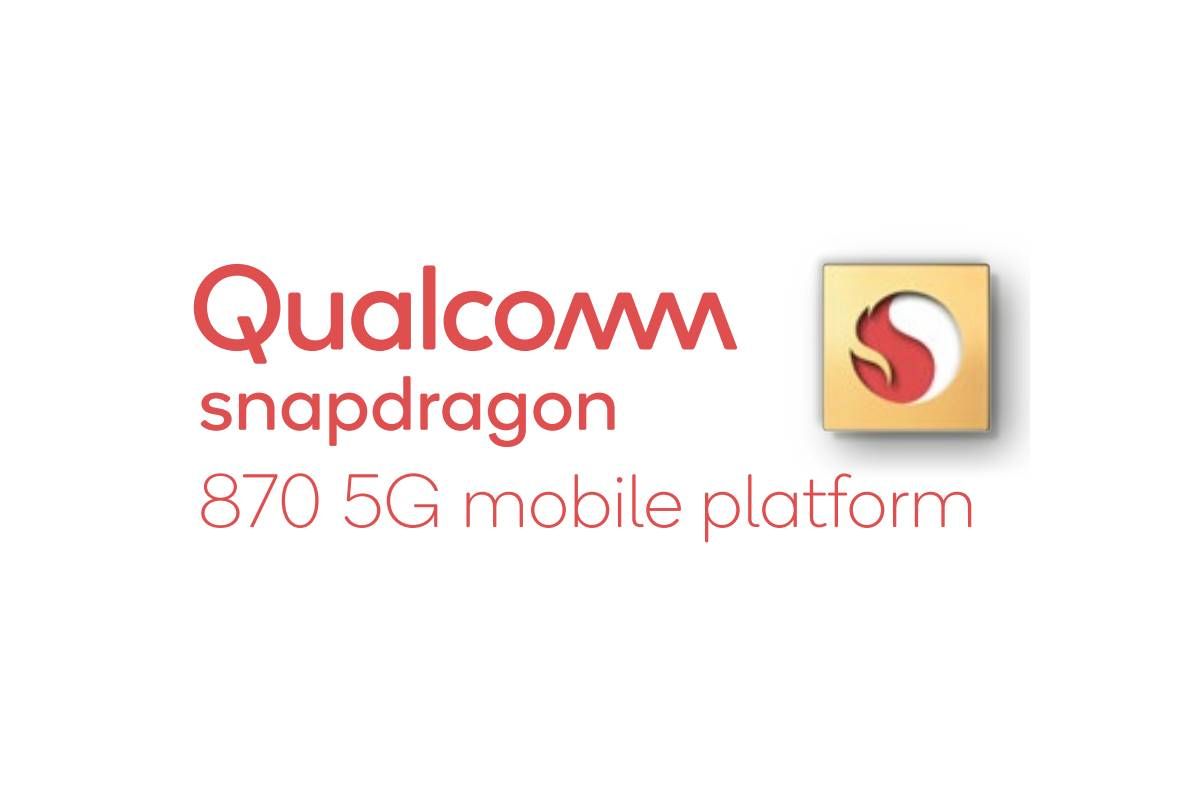Owing to the rising demand for affordable flagship smartphones, Qualcomm today unveiled the new Snapdragon 870 chipset. The latest Snapdragon 8 series chip from the company is a souped-up version of the Snapdragon 865 from last year that features an enhanced Kryo 585 CPU prime core clocked at up to 3.2GHz.
|
Qualcomm Snapdragon 870 |
Qualcomm Snapdragon 865 |
|
|---|---|---|
|
CPU |
1 x Kryo 585 (ARM Cortex A77-based) Prime core @3.2GHz, 1x 512KB pL2 cache3x Kryo 585 (ARM Cortex A77-based) Performance cores @ 2.4GHz, 3x 256KB pL2 cache4x Kryo 385 (ARM Cortex A55-based) Efficiency cores @ 1.8GHz, 4x 128KB pL2 cache4MB sL3 cache |
1x Kryo 585 (ARM Cortex A77-based) Prime core @ 2.84GHz, 1x 512KB pL2 cache3x Kryo 585 (ARM Cortex A77-based) Performance cores @ 2.4GHz, 3x 256KB pL2 cache4x Kryo 385 (ARM Cortex A55-based) Efficiency cores @ 1.8GHz, 4x 128KB pL2 cache4MB sL3 cache |
|
GPU |
Adreno 650Vulkan 1.1Full suite Snapdragon Elite Gaming FeaturesVideo playback: H.264 (AVC), H.265 (HEVC), VP8, VP9, 4K HDR10, HLG, HDR10+, Dolby Vision |
Adreno 650Vulkan 1.1Snapdragon Elite Gaming with new Desktop Forward Rendering, Game Color Plus, updatable GPU driversVideo playback: H.264 (AVC), H.265 (HEVC), VP8, VP9, 4K HDR10, HLG, HDR10+, Dolby Vision |
|
Display |
Maximum On-Device Display Support: UHD @ 60Hz, QHD+ @ 144HzMaximum External Display Support: UHD @ 60HzDisplayPort over USB Type-C support |
Maximum On-Device Display Support: UHD @ 60Hz, QHD+ @ 144HzMaximum External Display Support: UHD @ 60HzHDR supportDisplayPort over USB Type-C support |
|
AI |
Hexagon 698 with Hexagon Vector eXtensions and new Hexagon Tensor Accelerator5th generation AI EngineQualcomm Sensing Hub15 TOPS |
Hexagon 698 with Hexagon Vector eXtensions and new Hexagon Tensor Accelerator5th generation AI EngineQualcomm Sensing Hub15 TOPS |
|
Memory |
4 x 16-bit LPDDR4x @ 2133MHz, 16GBLPDDR5 @ 2750MHz |
4 x 16-bit LPDDR4 @ 2133MHz, 16GBLPDDR5 @ 2750MHz3MB system level cache |
|
ISP |
Dual 14-bit Spectra 480 ISPSingle camera: Up to 64MP with ZSL; Up to 200MPDual camera: Up to 25MP with ZSLVideo capture: 4K HDR @ 60fps + 64MP burst images; 4K @ 120fps; 8K @ 30fps; Slow motion up to 720p@960fps (unlimited); HDR10, HDR10+, HLG, Dolby Vision |
Dual 14-bit Spectra 480 ISPSingle camera: Up to 64MP with ZSL; Up to 200MPDual camera: Up to 25MP with ZSLVideo capture: 4K HDR @ 60 fps + 64MP burst images; 4K @ 120 fps; 8K @ 30 fps; Slow motion up to 720p@960 fps (unlimited); HDR10, HDR10+, HLG, Dolby Vision |
|
Modem |
Snapdragon X55 4G LTE and 5G multimode modemDownlink: Up to 7.5GbpsUplink: Up to 3GbpsModes: NSA, SA, TDD, FDDmmWave: 800Mhz bandwidth, 8 carriers, 2x2 MIMOsub-6 GHz: 200MHz bandwidth, 4x4 MIMO |
Snapdragon X55 4G LTE and 5G multimode modemDownlink: 7.5Gbps (5G), 2.5Gbps (4G LTE)Uplink: 3Gbps, 316Mbps (4G LTE)Modes: NSA, SA, TDD, FDDmmWave: 800MHz bandwidth, 8 carriers, 2x2 MIMOsub-6 GHz: 200MHz bandwidth, 4x4 MIMO |
|
Charging |
Qualcomm Quick Charge 4+Qualcomm Quick Charge AI |
Qualcomm Quick Charge 4+Qualcomm Quick Charge AI |
|
Connectivity |
Location: Beidou, Galileo, GLONASS, GPS, QZSS, NavIC, SBAS, Dual Frequency supportWi-Fi: Qualcomm FastConnect 6800; Wi-Fi 6 certified; 2.4/5GHz Bands; 20/40/80 MHz Channels; DBS, TWT, WPA3, 8x8 MU-MIMO, OFDMA, 1024 QAMBluetooth: Version 5.2, aptX TWS, aptX Adaptive, and aptX Voice |
Location: Beidou, Galileo, GLONASS, GPS, QZSS, SBAS, Dual Frequency supportWi-Fi: Qualcomm FastConnect 6800; Wi-Fi 6 certified; 2.4/5GHz Bands; 20/40/80 MHz Channels; DBS, TWT, WPA3, 8x8 MU-MIMO, OFDMA, 1024QAMBluetooth: Version 5.1, aptX TWS, aptX Adaptive, and aptX Voice |
|
Manufacturing Process |
7nm |
7nm (TSMC's N7P) |
As you can see in the spec sheet above, the new Snapdragon 870 isn't a whole lot different from the Snapdragon 865. Other than the faster prime core, the only obvious difference between the two SoCs is the supported Bluetooth version. While the Snapdragon 865 featured Bluetooth 5.1 support, the Snapdragon 870 offers Bluetooth 5.2 support. Follow this link to learn more about the new Snapdragon 8 series chipset.
The new Snapdragon 870 will power a new generation of flagship devices from several prominent OEMs, including Motorola, iQOO, OnePlus, OPPO, and Xiaomi. Devices featuring the chipset are expected to be announced in the first quarter of 2021.

